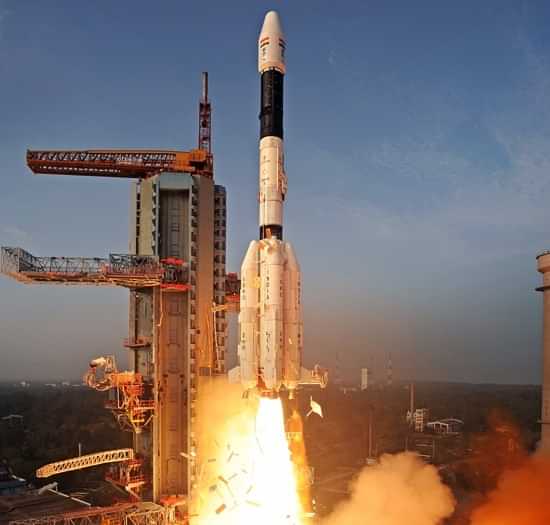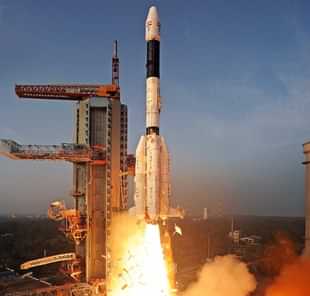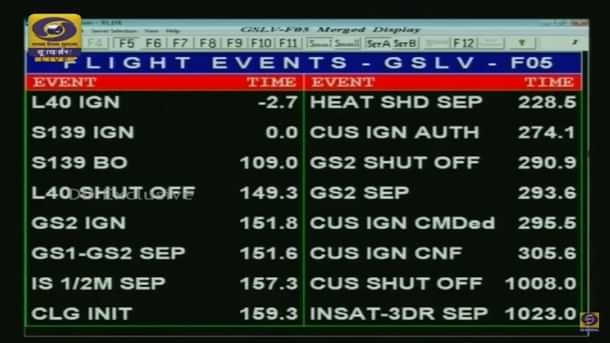Ideas
ISRO’s First Operational Cryogenic Engine Success, Explained In 700 Words
Swarajya Staff
Sep 09, 2016, 12:55 PM | Updated 12:55 PM IST
Save & read from anywhere!
Bookmark stories for easy access on any device or the Swarajya app.


September 8 marked a milestone in an arduous two-decade journey of Indian Space Research Organisation (ISRO) when for the first time an indigenous cryogenic engine successfully propelled an operational flight of GSLV (Geosynchronous Satellite Launch Vehicle) into space.
The entire flight time of GSLV - F05, the country’s third exclusive meteorological satellite – a little more than 17 minutes, could be marked out in 16 distinct ‘milestones’ each denoting a specific task or activity that had to happen on the more than 400-tonne heavy rocket.
Each activity had to happen at the exact time programmed earlier and was critical for the next activity to proceed. One failure and the rocket may end up going up in flames.
But ISRO’s mission control engineers and scientists seem pretty relaxed for the first nine milestones. These involved firing up the booster rockets, the first stage engine, shutting down the first stage and booster rocket, first stage separation. The first nine milestones also include separating of the heat shield covering the payload. ISRO’s PSLV launches have validated most of these activities - ISRO has been there and done that many times before.
The tenth milestone though was very important and most anticipated. The large display showing progress of the launch vehicle now listed “CUS IGN AUTH 274.1” - it meant the cryogenic upper stage ignition had been authorised at 274.1 seconds after the launch. Another 20 seconds lapsed waiting for the second stage to separate.
The display board then showed CUS IGN CMDed 295.5 - the command to ignite the cryogenic upper stage engines. In 10 seconds the board had another update: CUS IGN CNF 305.6. The cryogenic upper stage had started firing at 305.6 seconds after launch.
That was when the control room erupted in applause. It had been a difficult journey of more than two decades for ISRO in trying to make a working cryogenic engine. No serious space player leaves this one stone unturned. You got to be able to master cryogenic technology to earn your passport to space. In ISRO’s own words:
A cryogenic rocket stage is more efficient and provides more thrust for every kilogram of propellant it burns compared to solid and earth-storable liquid propellant rocket stages. Specific impulse (a measure of the efficiency) achievable with cryogenic propellants (liquid Hydrogen and liquid Oxygen) is much higher compared to earth storable liquid and solid propellants, giving it a substantial payload advantage.

This means no other form of propulsion can get you the kind of energy and efficiency that cryogenics provide. But here is the problem with developing cryogenic engines:
... cryogenic stage is technically a very complex system compared to solid or earth-storable liquid propellant stages due to its use of propellants at extremely low temperatures and the associated thermal and structural problems.
Oxygen liquifies at -183 degree C and Hydrogen at -253 degree C. The propellants, at these low temperatures are to be pumped using turbo pumps running at around 40,000 rpm. It also entails complex ground support systems like propellant storage and filling systems, cryo engine and stage test facilities, transportation and handling of cryo fluids and related safety aspects.
The behaviour of materials at cryogenic temperatures of less than 250 degree below zero, the turbo pump operating at very high speeds of the order of 40,000 rpm, the elaborate chilling process for preparing the ground and on-board systems, the interplay of critical engine parameters and a host of technical aspects make the development quite challenging.
Only five nations have mastered the ability to pull off all this on a rocket travelling at more than 5km per second. It had taken quite a few attempts for ISRO to get this right. Technology embargoes were also added to the list of challenges they had to overcome. Russia, which had promised assistance, was forced to go back on its word by the US. It stopped with supplying six Russian made cryogenic engines. From then on ISRO had to go on its own in developing a cryogenic engine of its own.
The success of GSLV - F05 came on the back of one earlier failure and one successful launch. This was also the first operational flight for the locally built cryogenic engine. It had to go well. And it did - at 1008 seconds after launch the display board confirmed just that: CUS SHUT OFF.
After a burn time of slightly more than 700 seconds the cryogenic engine shut off as planned. The payload was delivered in the planned orbit after a few more seconds and the mission could now be called a complete success.





